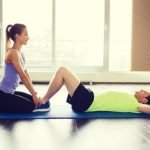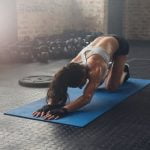Are you looking for the best way on how to be slim and fit exercise? Achieving a slim and fit body is a goal for many individuals, and one of the most effective ways to reach this goal is through regular exercise. Whether your aim is to shed a few pounds, tone your muscles, or simply improve your overall health, incorporating the right exercise routine into your lifestyle can make a significant difference.
Exercise not only plays a crucial role in weight management but also contributes to overall physical and mental well-being. From boosting metabolism to reducing stress, the benefits of regular physical activity are undeniable.
In this article, we will explore the importance of exercise for achieving a slim and fit body, as well as provide valuable insights into setting realistic goals, choosing the right workout routines, understanding the benefits of cardio and strength training, incorporating flexibility exercises, staying motivated, and finding the right balance between exercise and rest.
By understanding the vital role that exercise plays in achieving a slim and fit body, you will be better equipped to embark on your journey towards better health and fitness. Whether you are new to exercise or looking to enhance your current fitness routine, this comprehensive guide will provide you with the knowledge and motivation needed to succeed. So let’s dive in and discover how you can achieve your fitness goals through effective exercise strategies.
Setting Realistic Goals
When it comes to achieving a slim and fit body through exercise, setting realistic goals is crucial. Many people have the misconception that exercise alone will result in rapid weight loss. However, understanding the relationship between exercise and weight loss is essential for creating achievable fitness goals. It’s important to recognize that while exercise plays a significant role in weight management, it must be combined with a healthy diet and lifestyle for optimal results.
The key to setting realistic goals for weight loss through exercise is to understand that it is a gradual process. Aim for a weight loss of 1-2 pounds per week, which is considered safe and sustainable. Setting smaller, achievable goals can help you stay motivated and track your progress more effectively.
Additionally, it’s important to focus on overall health and fitness rather than just the number on the scale. Building strength, endurance, flexibility, and overall wellness should be part of your goal-setting process.
Incorporating different types of exercises into your routine can also contribute to more effective weight loss. While cardiovascular exercises are great for burning calories, strength training helps build lean muscle mass, which in turn boosts metabolism and aids in fat loss. Flexibility exercises like yoga can improve overall mobility and provide stress relief. Understanding the multifaceted benefits of various types of exercise can help you set well-rounded fitness goals that go beyond just shedding pounds.
| Exercise Type | Benefits |
|---|---|
| Cardiovascular (e.g. running, cycling) | Burns calories, improves heart health |
| Strength Training (e.g. weight lifting) | Builds lean muscle mass, boosts metabolism |
| Flexibility (e.g. yoga, stretching) | Improves mobility, reduces stress |
Choosing the Right Exercise Routine
Understanding Your Body and Goals
Before diving into any exercise routine, it’s important to take the time to understand your body and your fitness goals. Consider what areas of your body you’d like to focus on, whether it’s slimming down certain areas or toning specific muscles.
Additionally, think about what types of workouts you enjoy and are more likely to stick with in the long run. By understanding your body and goals, you can tailor an exercise routine that is both effective and enjoyable.
Cardio vs. Strength Training
When it comes to slimming and toning, both cardio and strength training play important roles. Cardio exercises such as running, cycling, or swimming can help burn calories and fat, leading to a slimmer physique. On the other hand, strength training exercises like weightlifting or bodyweight exercises can help build lean muscle mass, resulting in a more toned appearance. Finding a balance between these two types of exercise is key to achieving a slim and fit body.
Seeking Professional Guidance
For those who are unsure of where to start or how to choose the right exercise routine for their goals, seeking guidance from fitness professionals can be incredibly helpful. Personal trainers or fitness instructors can provide valuable insight into which exercises will be most effective for each individual’s unique needs and preferences. Additionally, they can assist in creating a personalized workout plan that aligns with specific slimming and toning goals.
The Benefits of Cardio
Cardiovascular exercise, also known as aerobic exercise, is an essential component of any fitness routine aimed at achieving a slim and fit body. This type of exercise helps to increase your heart rate, improve circulation, and boost your overall endurance. Whether you prefer running, cycling, swimming, or dancing, engaging in regular cardiovascular workouts can have numerous benefits for your physical health and weight management.
One of the main advantages of cardio exercise is its ability to help you burn calories and lose body fat. By engaging in activities that elevate your heart rate for an extended period of time, such as jogging or using the elliptical machine, you can create a calorie deficit that contributes to weight loss.
Additionally, regular aerobic exercise can also help reduce visceral fat – the type of fat that surrounds your organs and has been linked to various health problems such as heart disease and diabetes.
Furthermore, cardiovascular workouts can improve your overall cardiovascular health by strengthening your heart and lungs. Engaging in regular aerobic exercise can help lower your blood pressure, improve cholesterol levels, and enhance circulation. As a result, incorporating cardio into your fitness routine not only helps you achieve a slimmer physique but also contributes to better overall health and longevity.
| Benefits | Examples |
|---|---|
| Burns calories | Jogging or using the elliptical machine |
| Reduces visceral fat | Running, cycling or swimming |
| Improves cardiovascular health | Cycling or dancing |
Strength Training
Building lean muscle is an important component of achieving a slim and toned physique. While cardio exercises can help with weight loss and overall fitness, strength training is crucial for sculpting the body and creating definition. Here are some tips for incorporating strength training into your exercise routine:
- Start with bodyweight exercises: If you’re new to strength training, it’s best to begin with exercises that use your own body weight as resistance. These include push-ups, squats, lunges, and planks.
- Progress to free weights: As you build strength, consider adding free weights such as dumbbells and kettlebells to your routine. These can help increase the intensity of your workouts and promote muscle growth.
- Incorporate compound exercises: Compound movements that engage multiple muscle groups at once, such as deadlifts, bench presses, and overhead presses, are effective for building lean muscle mass.
In addition to these tips, it’s important to focus on proper form and technique to prevent injury during strength training. Consider working with a personal trainer or fitness professional to learn the correct way to perform various exercises. Remember to listen to your body and give yourself adequate rest between strength training sessions in order to allow your muscles time to recover and grow.
By incorporating strength training into your exercise routine, you can work towards achieving a slim and toned physique while also reaping the many health benefits associated with building lean muscle mass.
The Role of Flexibility
Benefits of Stretching
Incorporating flexibility exercises such as stretching and yoga into your fitness routine is essential for achieving a slim and fit body. Stretching helps improve the range of motion in your joints, which can enhance your overall performance during other workouts. Additionally, regular stretching can help reduce the risk of injury by improving your muscle flexibility and joint stability. It also promotes better posture, which is crucial for maintaining a healthy physique.
The Importance of Yoga
Yoga is another valuable component of a well-rounded fitness routine. Not only does yoga provide physical benefits such as increased flexibility, strength, and balance, but it also offers mental benefits. The mindfulness and relaxation aspects of yoga can help reduce stress levels, improve mental clarity, and promote a positive mindset – all of which are important for staying motivated to achieve your fitness goals.
Integrating Flexibility Exercises Into Your Routine
To incorporate flexibility exercises effectively, it’s important to dedicate specific time for stretching or yoga within your weekly schedule. This could be in the form of a separate yoga class, or simply setting aside 10-15 minutes at the end of each workout session for stretching. By making flexibility training a regular part of your routine, you’ll not only improve your physical performance but also enhance your overall sense of well-being.
Tips for Staying Motivated
Staying motivated to exercise can be a challenge, but it is crucial for achieving and maintaining a slim and fit body. Here are some tips to help you stay on track with your fitness routine:
- Set realistic and achievable goals: It’s important to set specific, measurable, and attainable goals for your exercise routine. This will give you something to work towards and help you stay focused.
- Find an exercise buddy: Working out with a friend or family member can make exercise more enjoyable and help keep you accountable. You can encourage each other and celebrate your progress together.
- Switch up your routine: Doing the same workout every day can lead to boredom and decreased motivation. Try different types of exercises, such as hiking, swimming, or dance classes, to keep things interesting.
Overcoming challenges and staying consistent with exercise requires determination and perseverance. Here are some additional strategies to help you stay motivated:
- Reward yourself: Treat yourself to something special when you reach a fitness milestone. This could be buying new workout clothes, getting a massage, or enjoying a healthy meal at your favorite restaurant.
- Track your progress: Keep a journal or use a fitness app to record your workouts and monitor your progress over time. Seeing how far you’ve come can boost your confidence and motivate you to keep going.
- Stay positive: Focus on the benefits of exercise, such as increased energy, better mood, and improved health. Remind yourself of these positives when faced with obstacles.
By implementing these tips for staying motivated, you can overcome challenges and maintain consistency with your exercise routine, ultimately leading to long-term success in achieving a slim and fit body.
The Importance of Rest and Recovery
While exercise is crucial for achieving a slim and fit body, rest and recovery are equally important for optimal results. Many people make the mistake of overtraining, thinking that more exercise will lead to faster weight loss and muscle gain. However, this can actually have the opposite effect, leading to fatigue, injury, and burnout. Understanding the balance between exercise and rest is essential for achieving your fitness goals in a sustainable way.
Rest and recovery allow your body to repair and rebuild muscle tissue after a workout. When you engage in strength training or intense cardio exercises, you create micro-tears in your muscles. Rest days give your body the opportunity to repair these tears, leading to muscle growth and strength gains. Additionally, adequate rest can help prevent overuse injuries that can occur from continuous strenuous activity.
Incorporating rest days into your exercise routine is essential for preventing burnout and maintaining motivation. Constantly pushing yourself without giving your body time to recover can lead to mental fatigue as well as physical exhaustion. By scheduling regular rest days, you can mentally recharge and come back to your workouts feeling refreshed and motivated. This balanced approach will help you achieve long-term success in your fitness journey.
Conclusion
In conclusion, achieving a slim and fit body through exercise requires dedication, determination, and the right approach. By understanding the relationship between exercise and weight loss, setting realistic goals, choosing the right workout routine, and incorporating cardio, strength training, and flexibility exercises, individuals can work towards their fitness goals effectively. It’s important to remember that staying motivated and consistent with exercise is key to long-term success.
Embracing a healthy and active lifestyle goes beyond just physical appearance – it also contributes to overall well-being and longevity. By prioritizing rest and recovery as part of a well-rounded fitness routine, individuals can achieve optimal results while reducing the risk of injuries or burnout. Regular physical activity not only helps in maintaining a healthy weight but also reduces the risk of chronic diseases such as heart disease, diabetes, and certain cancers.
By making exercise a regular part of one’s life and embracing a balanced approach to fitness, individuals can enjoy long-term slimness and wellness. It’s important to find joy in the process of exercising rather than solely focusing on end results. Ultimately, by adopting a holistic approach to health and fitness – which includes regular exercise along with proper nutrition and adequate rest – individuals can achieve their goal of being both slim and fit for the long term.
Frequently Asked Questions
What Exercise Should I Do to Become Slim?
To become slim, a combination of cardiovascular exercise and strength training is effective. Cardio exercises like running, cycling, or swimming can help burn calories and reduce body fat. Strength training with exercises like weight lifting or bodyweight exercises can help build lean muscle mass, which can increase metabolism and give the body a toned appearance.
How Can I Get Slim but Fit?
To get slim but fit, it’s important to focus on both nutrition and exercise. Incorporating a balanced diet that includes plenty of fruits, vegetables, lean proteins, and whole grains is essential for weight management. Pairing this with regular physical activity, such as a combination of cardio and strength training exercises, can help achieve a slim yet fit physique.
How Can I Be Slim and Fitted?
Being slim and fitted requires dedication to a healthy lifestyle. This includes maintaining a well-balanced diet that supports weight management and overall health.
Additionally, engaging in regular physical activity like cardio exercises for calorie burning and strength training for muscle toning is crucial for achieving the desired slim and fitted appearance. Consistency in both diet and exercise is key to reaching this goal.

Passionate about providing useful information to anyone with an interest in the field of Personal Training, I strive to pass on to our readers quality information and to answer any questions about Personal Trainers, the work they do and how to become one.





